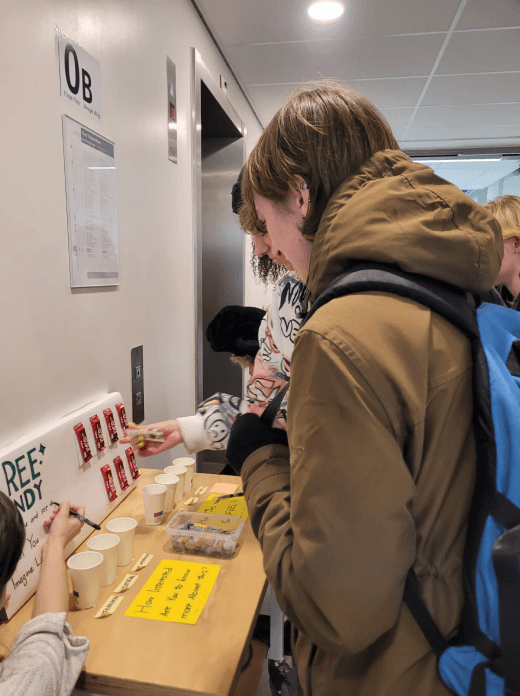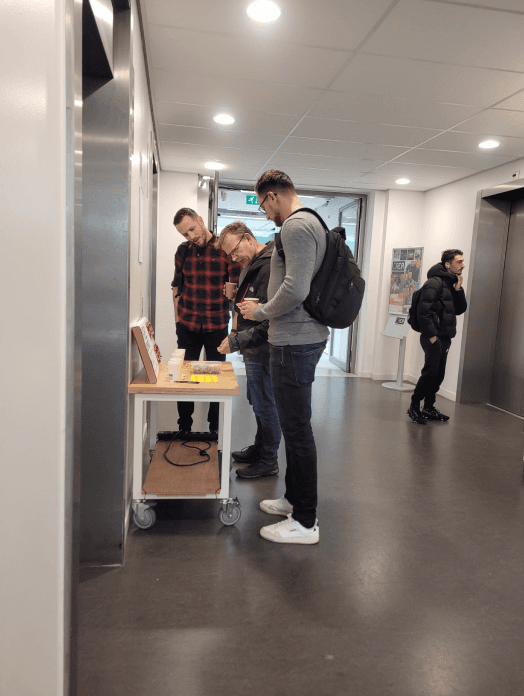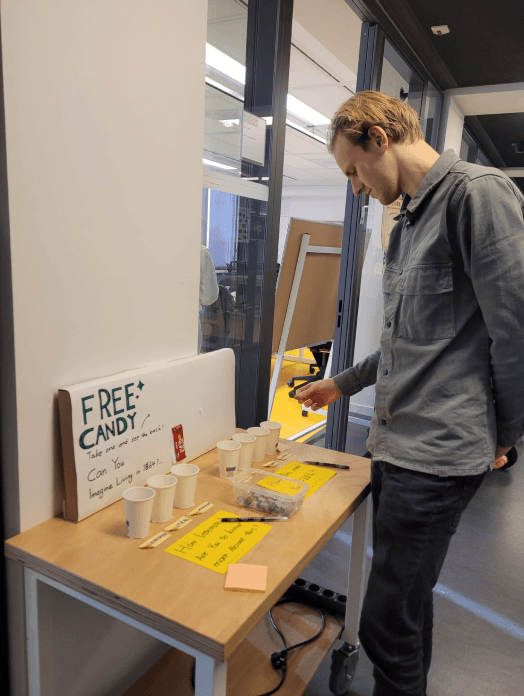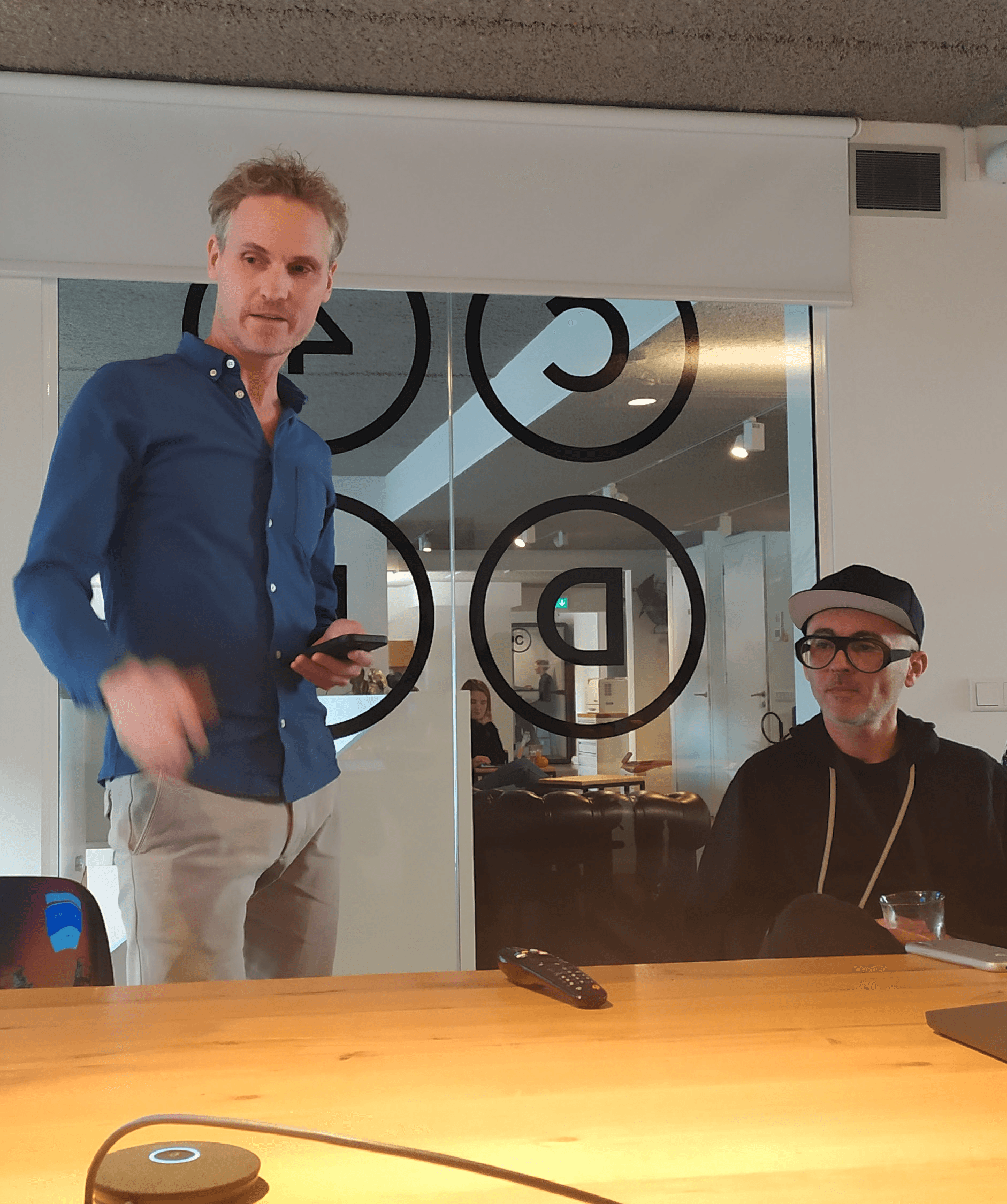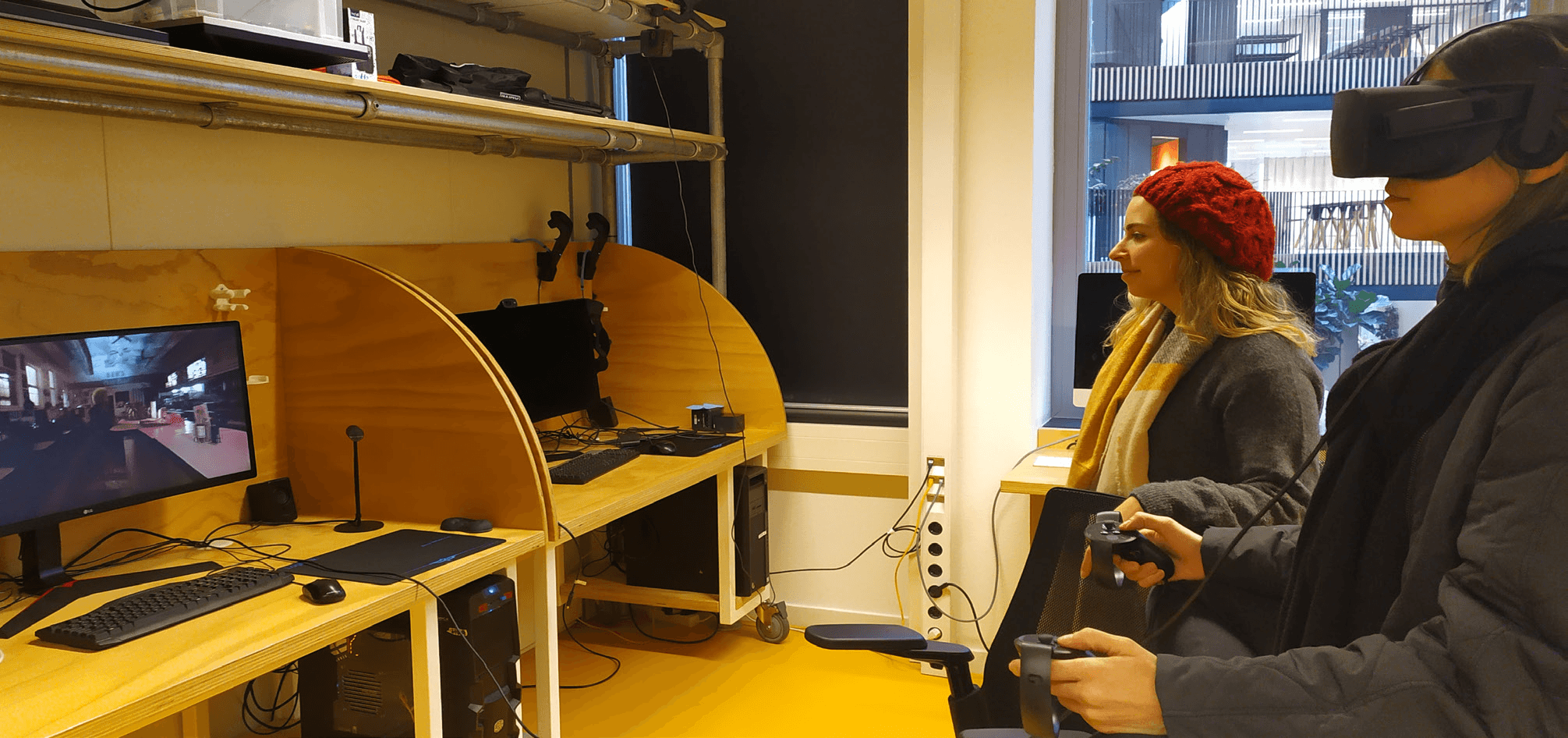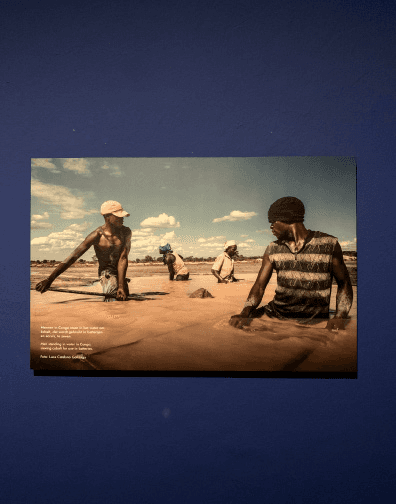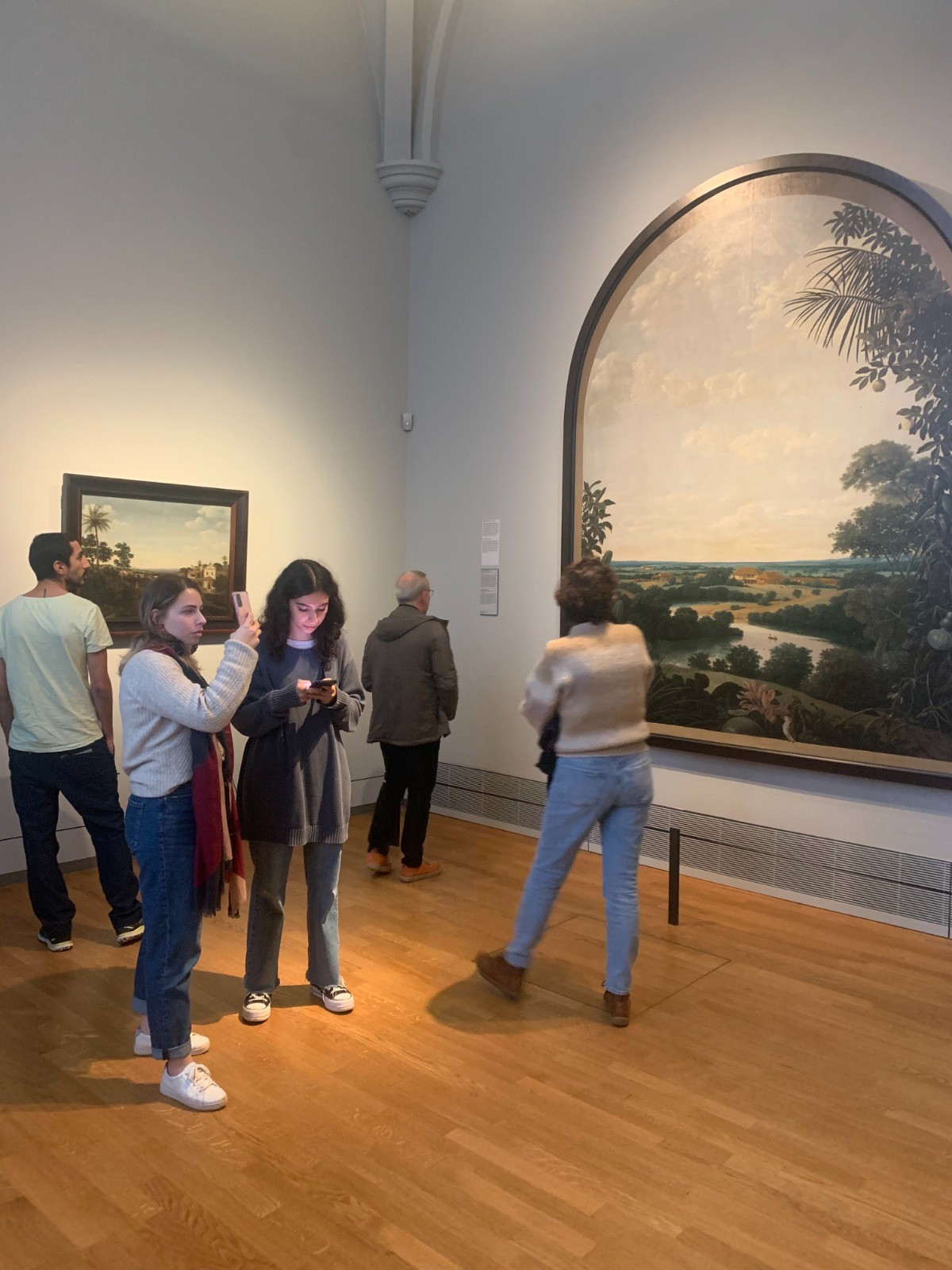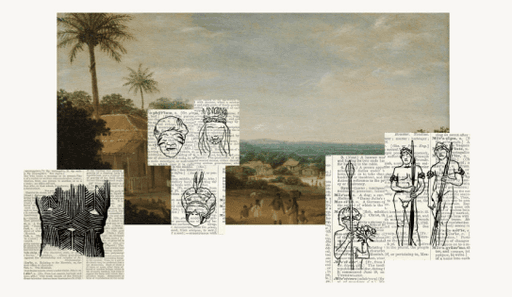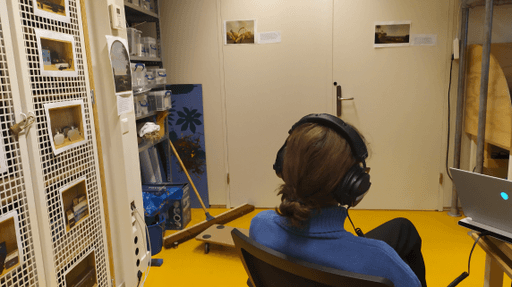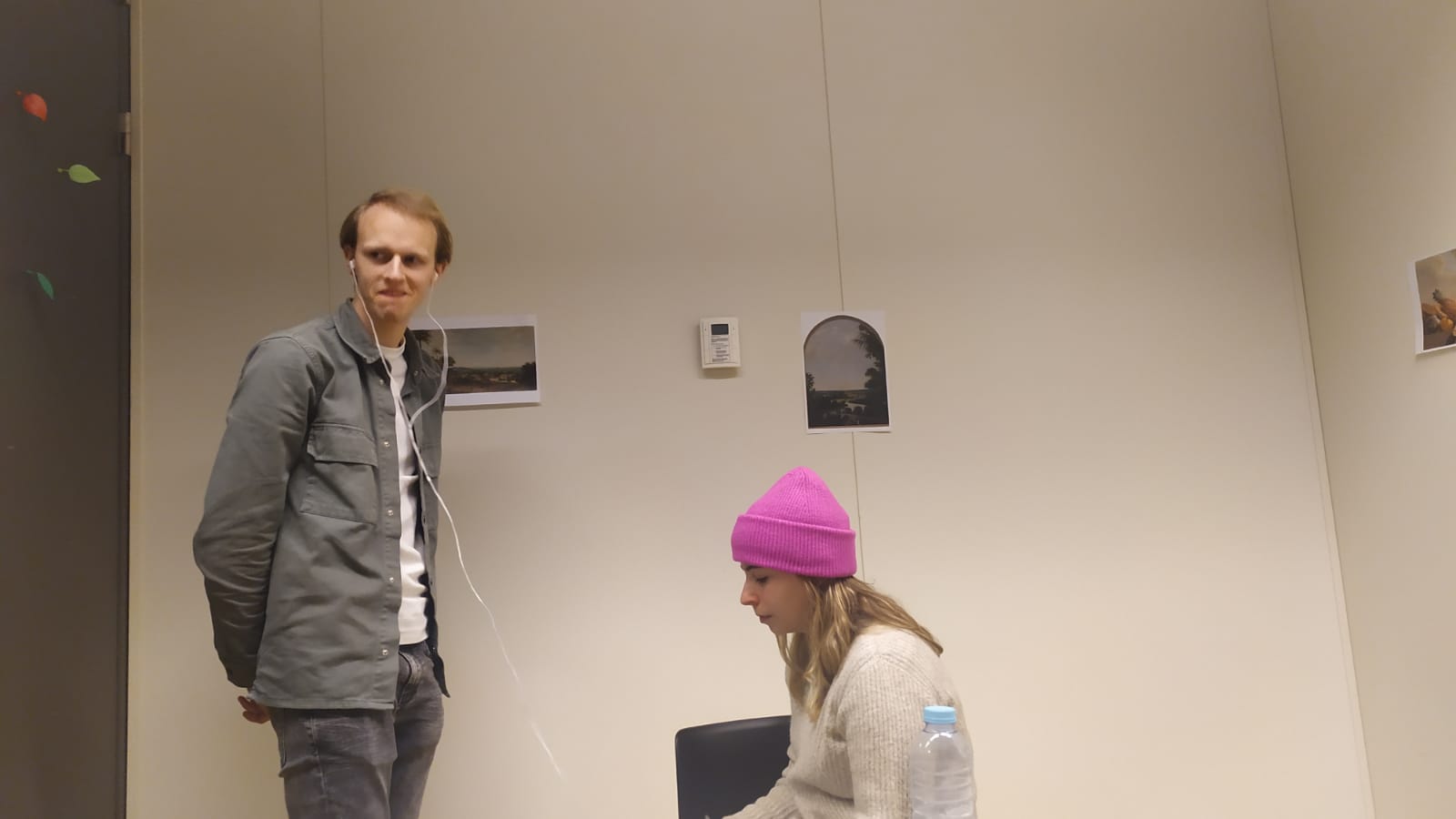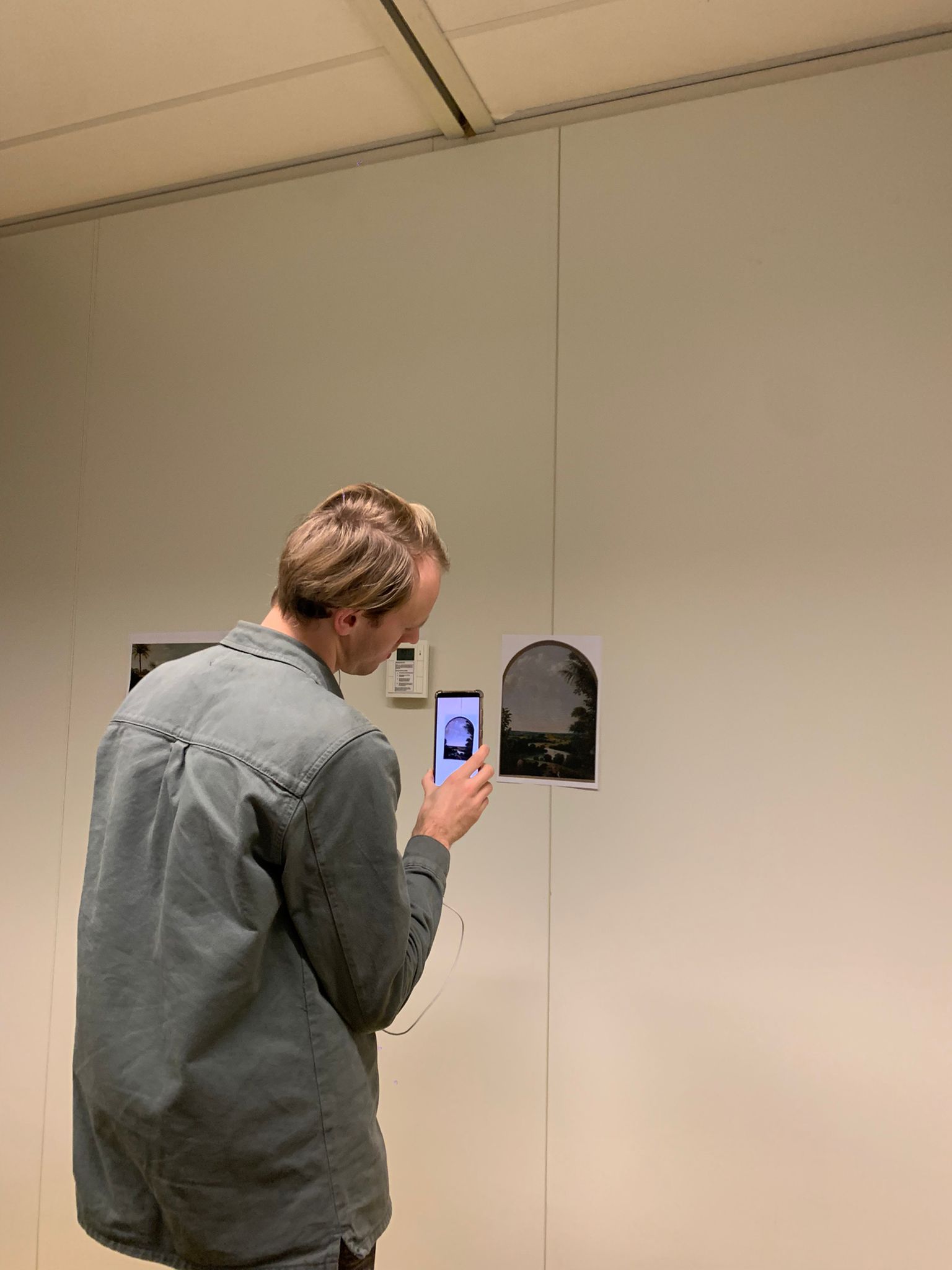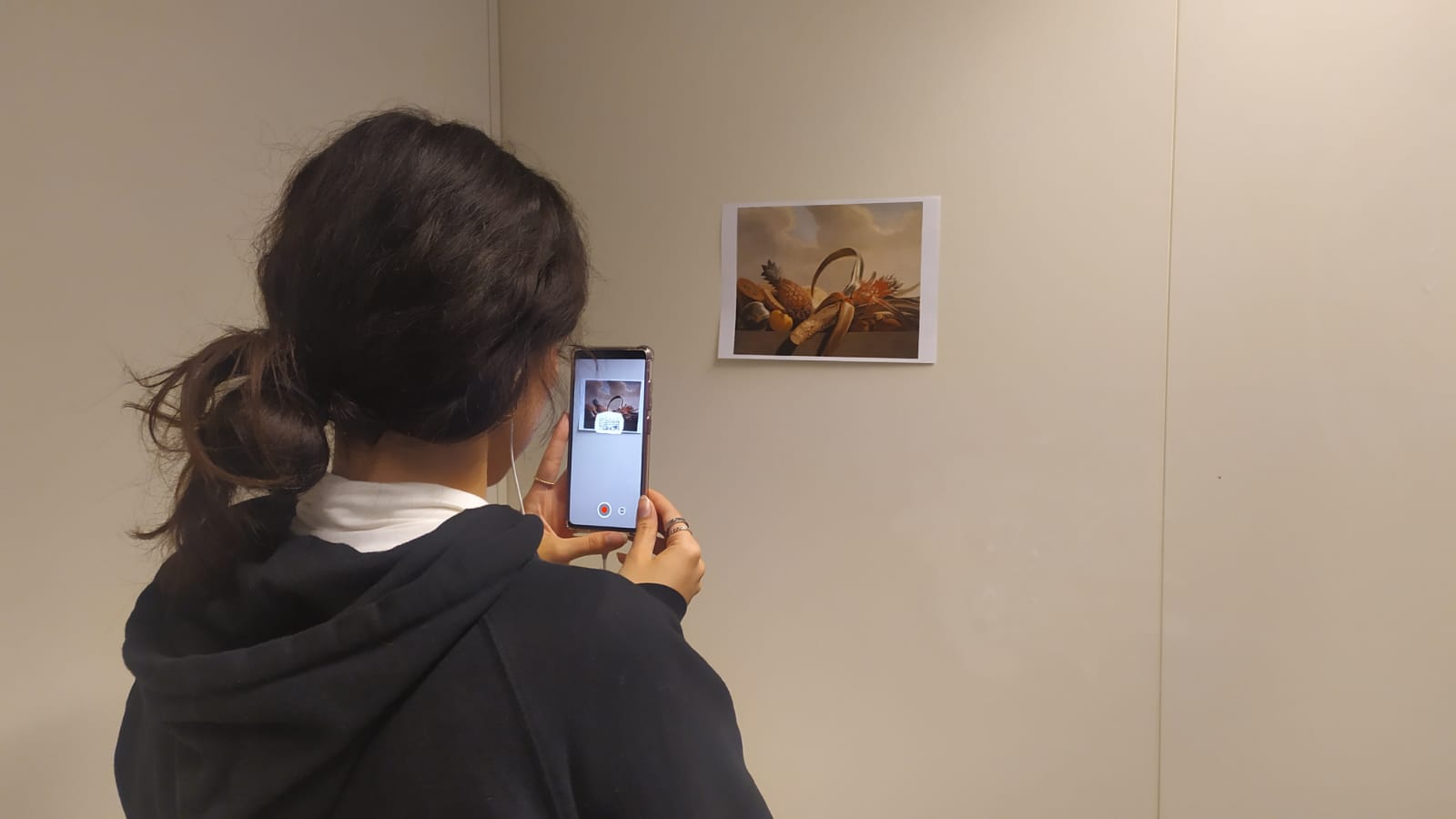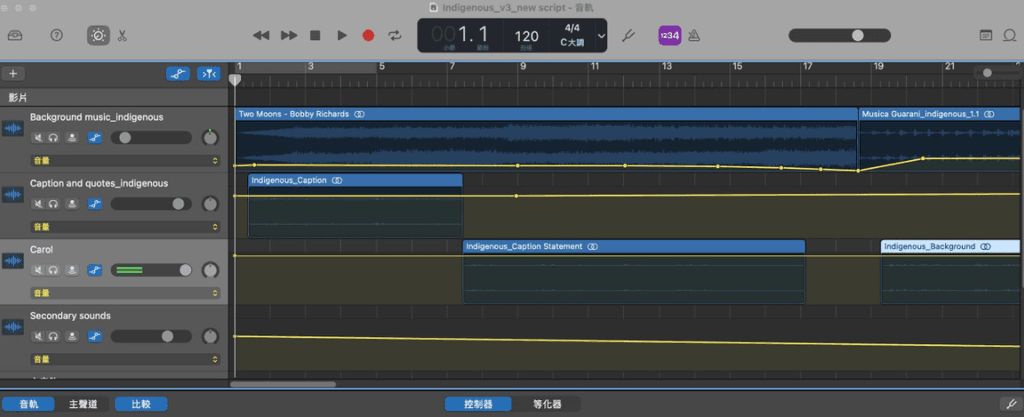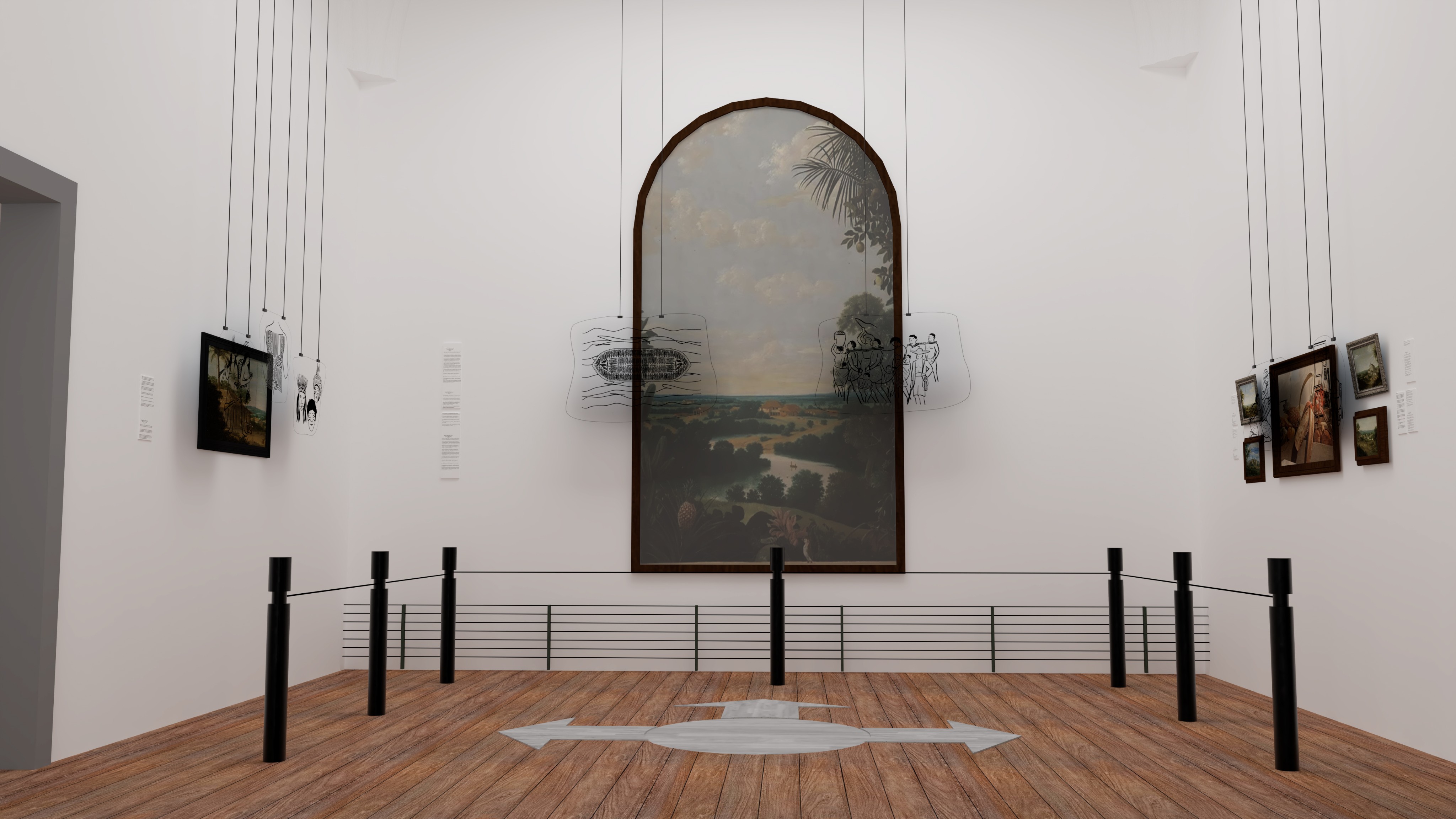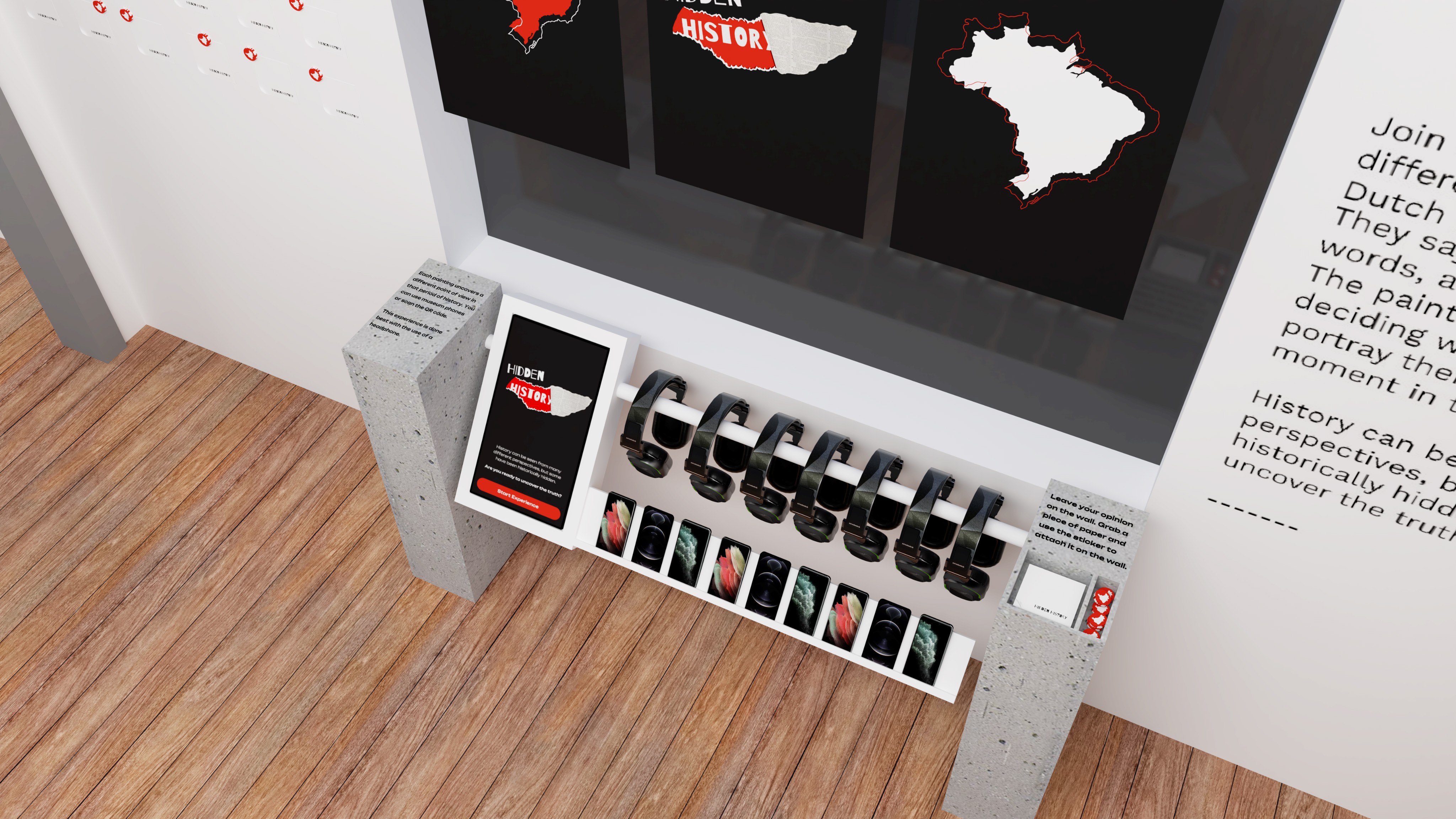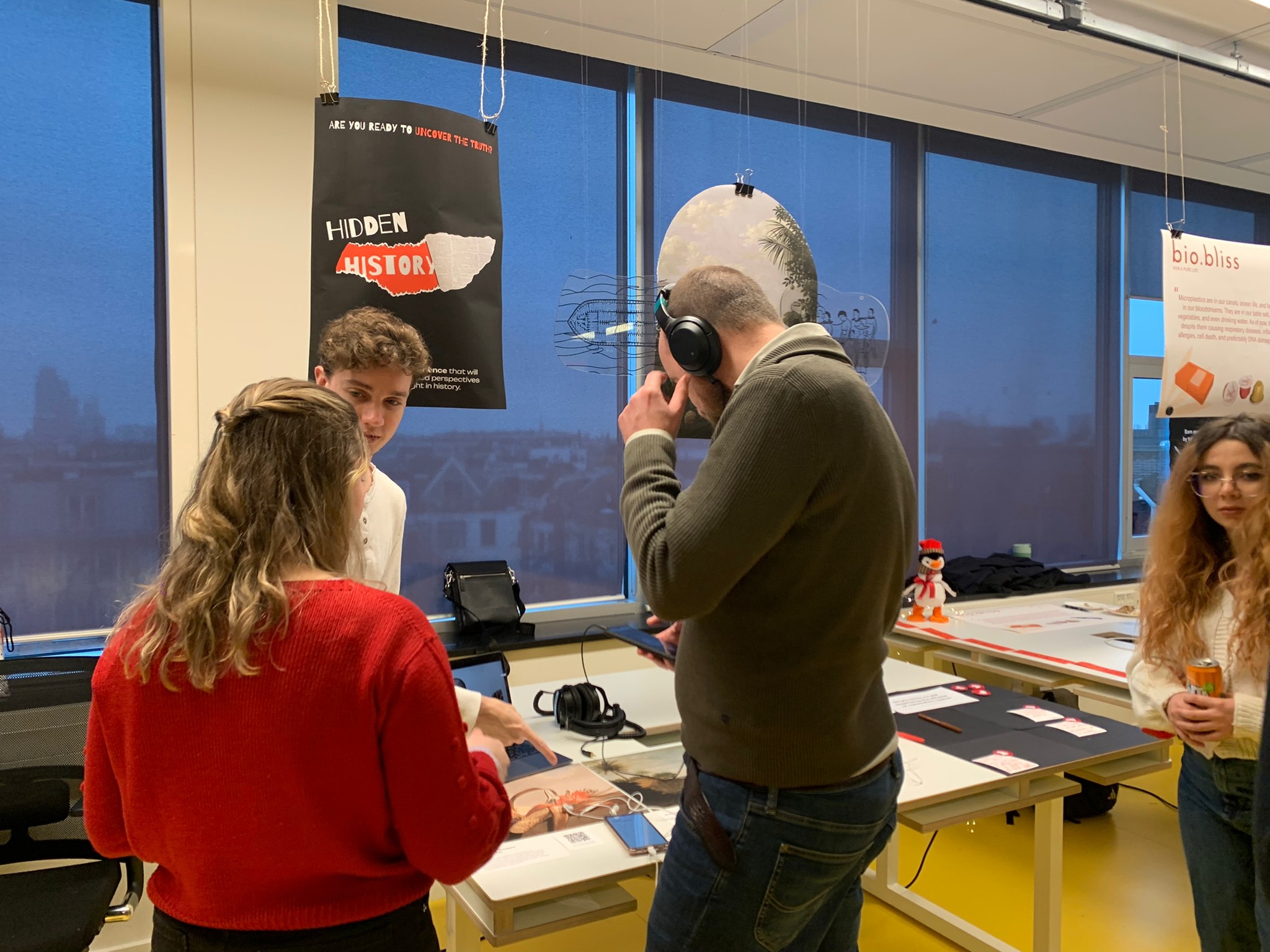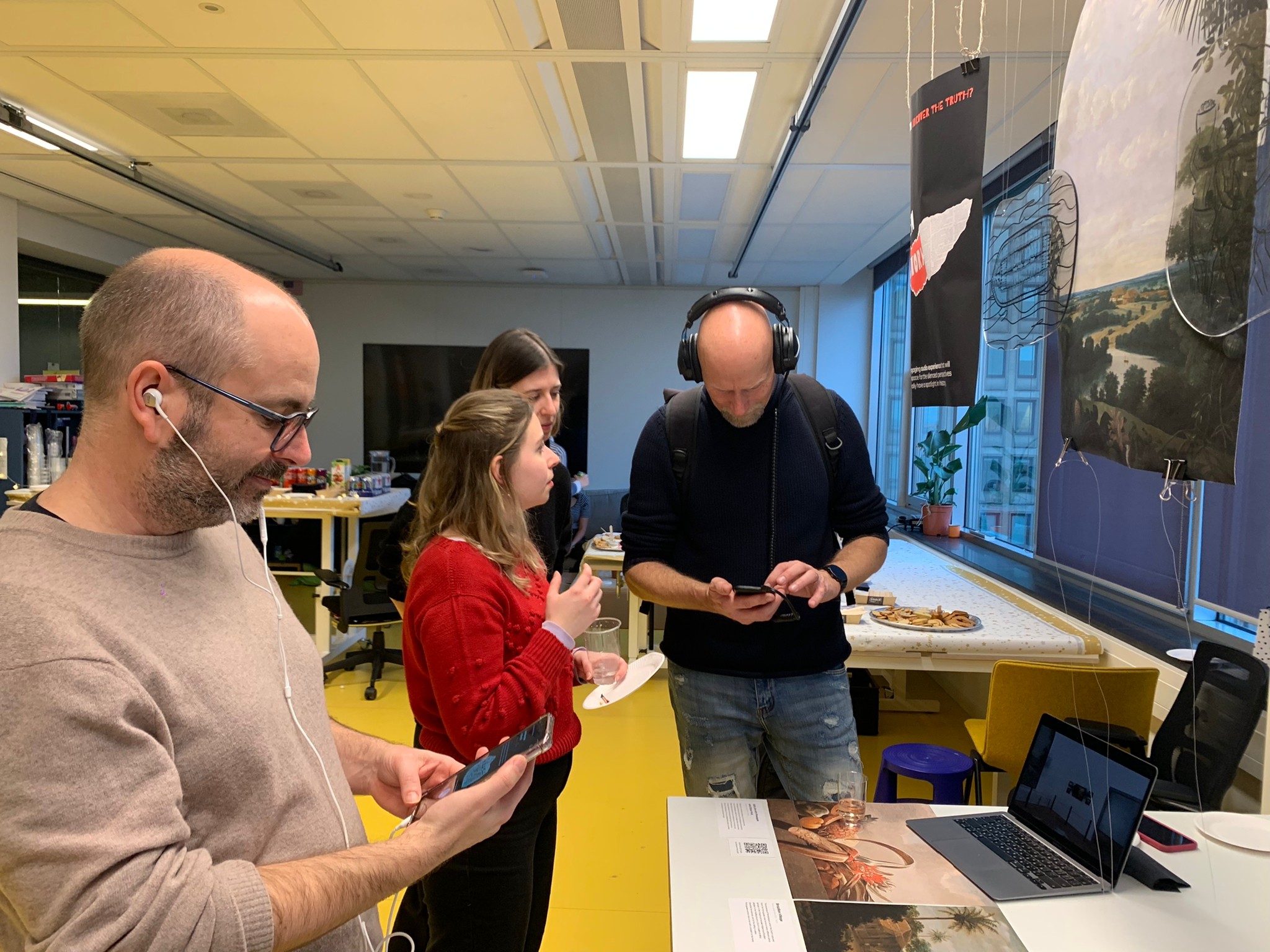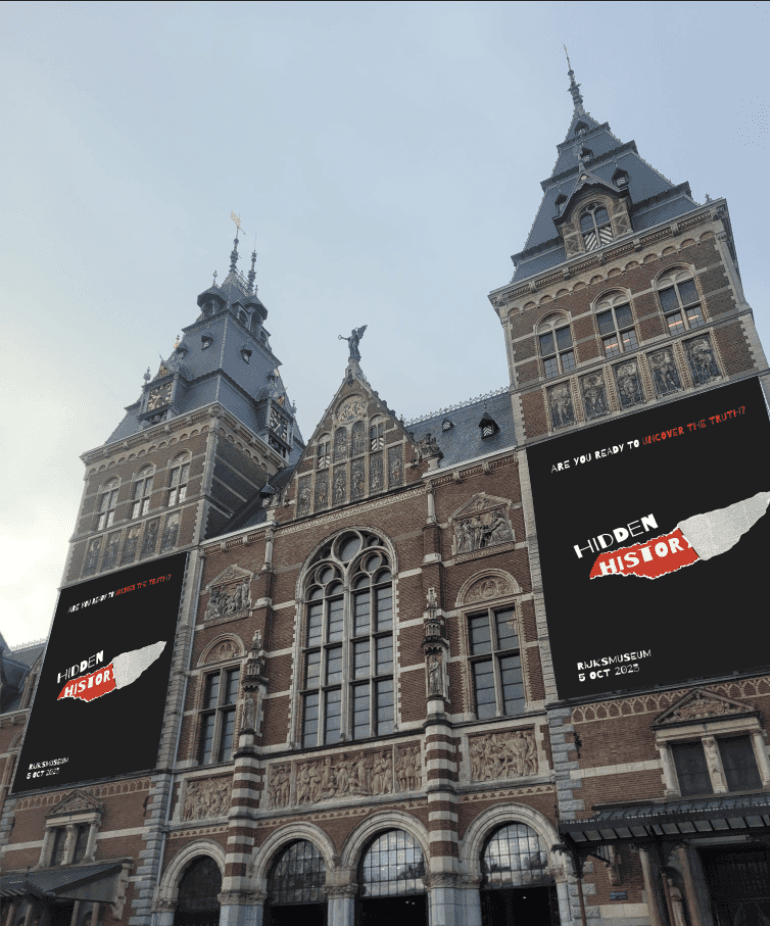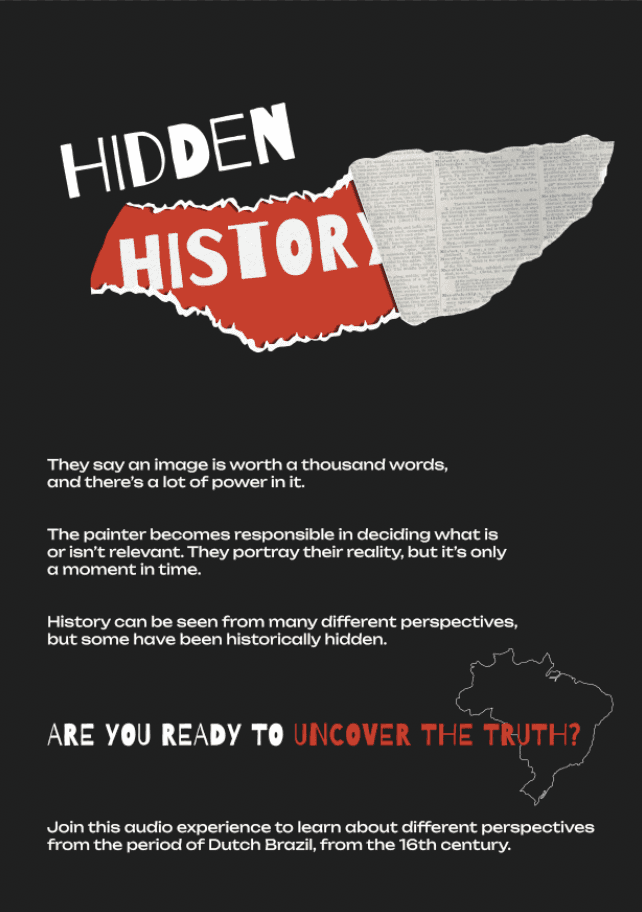Hidden History
An audio tour to unfold the impacts of Decolonization in the Dutch-Brazil room of the Rijks Museum
CLIENT
Civic Interaction Design Research Group- Morgana Braga, Mirjam Vosmeer
TIMELINE
December 2022- February 2023
TEAM
Fatima Tari- UX Designer
Eva Valentine- UX & Graphic Designer
Carolina Masuero- UX Designer
MJ Chen- UX & Sound Designer
MY CONTRIBUTIONS
UX Research, AR prototype (Artivive), 3D Modeling & Rendering
Introduction
This project was called “Impacts of Decolonization”, which asked us to decolonize the Dutch-Brazil room in the Rijks Museum; a room with paintings from the 17th century, when the Netherlands occupied Brazil and enslaved thousands of Africans to work on the sugar plantations. This period of time was of enormous profit for the Dutch, and the story told in the paintings just show the glory and the beauty of Brazil’s landscape.
“Hidden story” audio tour wants to tell the untold stories, to turn the romanticized narrative in the museum to a multi-vocal one that talks about other stories that are not being shown; to show the truth.

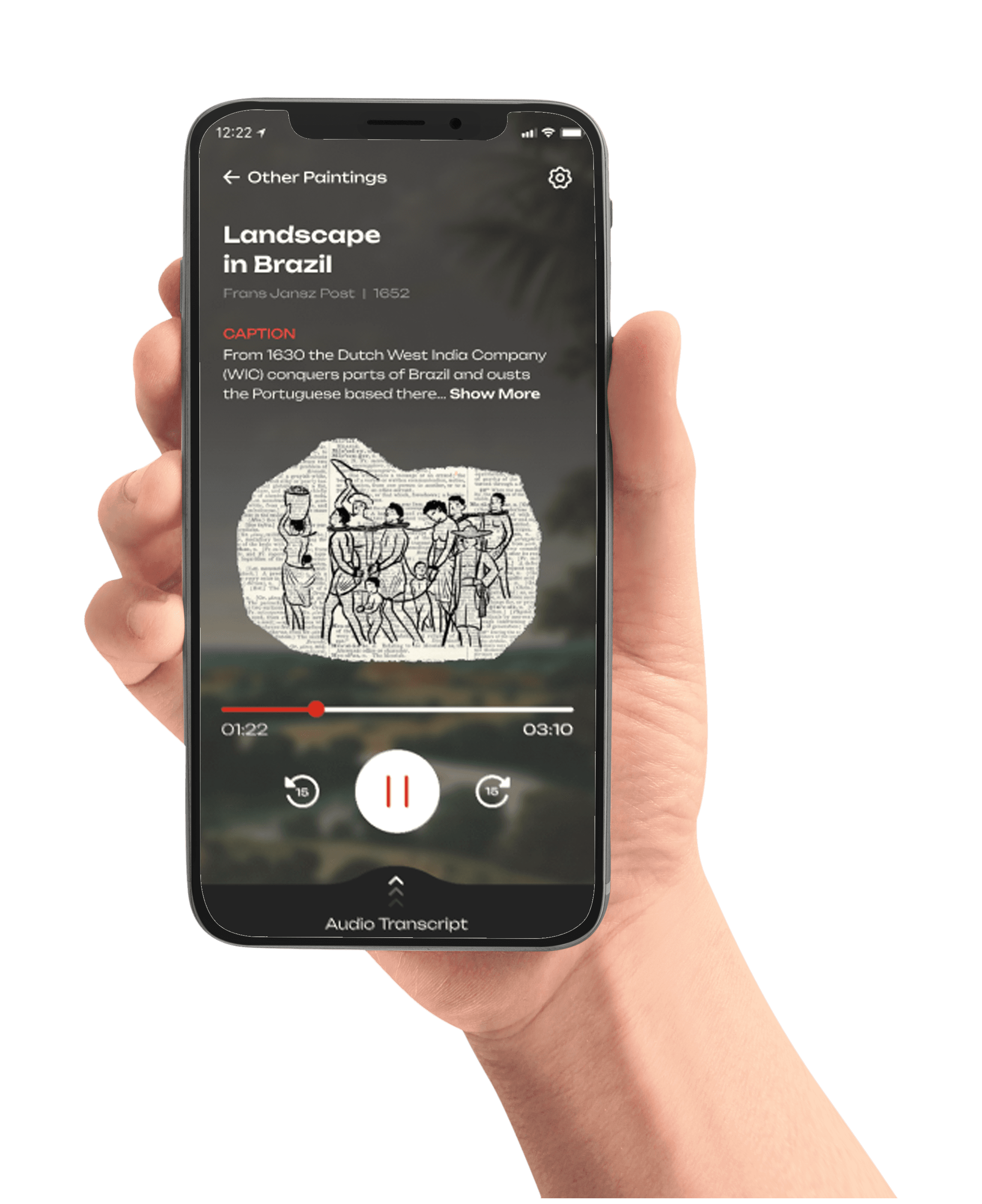
What?
Create an alternative narrative in the Rijks Museum's Dutch-Brazil room that goes beyond the romanticized portrayal of Brazil's 17th-century landscape and reveals the untold stories of colonialism, slavery, and their impacts.
Activities
Conducting field studies, user interviews, stakeholder interviews, and literature research.
Analyzing the current narrative and visitor interactions within the Dutch-Brazil room.
Why?
To decolonize the narrative of Dutch colonial history by providing a multi-vocal representation that acknowledges the perspectives of those affected by colonialism, including the enslaved and indigenous populations.
Activities
Identifying stakeholders and defining project goals.
Engaging with voices of authority, including descendants of enslaved individuals and Brazilians, to gather insights.
Ideation to develop an engaging narrative that connects historical events to their relevance today.
How?
To develop an audio tour that immerses visitors in the hidden histories through personal narratives and evocative storytelling.
Activities
Creating wireframes and prototypes for the audio experience.
Recording narratives with diverse voices to convey multiple perspectives.
Testing the prototype with a diverse audience and refining based on feedback.
Are you ready for a detailed process? You can also jump
Straight to the APP?
Research Prototype as a Means of Inquiry
We started this project with building a research prototype with “the prototype as a means of inquiry”. People were enslaved in the Dutch colonization of Brazil mostly to work on sugar mills and plantations.
Thinking of this, we thought we design a tool to observe people’s reaction when they see a treat (candy in this case) could be a consequence of slave-work back in the 17th.



We asked the participants to answer two main questions:
How interested are you to know more about this subject?
How does this make you feel?
Seventeen participants completed the test.
Interest in the subject was generally high, with 11 participants expressing interest, 4 remaining neutral, and 2 not interested.
Emotional reactions varied: 7 participants felt surprised, 9 felt sad, 8 felt angry, and 3 reported other emotions.
Several participants noted feelings of sadness and anticipation for the outcome of the project.
Stakeholder Interviews
In our first official meeting with the client, we discussed the history, how the museums narrate the story, what other museums and exhibitions have done in this context, and what is the situation in the Dutch-Brazil room of the Rijks (what has been told, what is not being told).
We also discussed how this is a relevant topic regarding its social (existing structural racism) and tangible aspect. Moreover, what complications are there such as not shaming or preaching people; or how to deal with masterpieces existing because of that period.
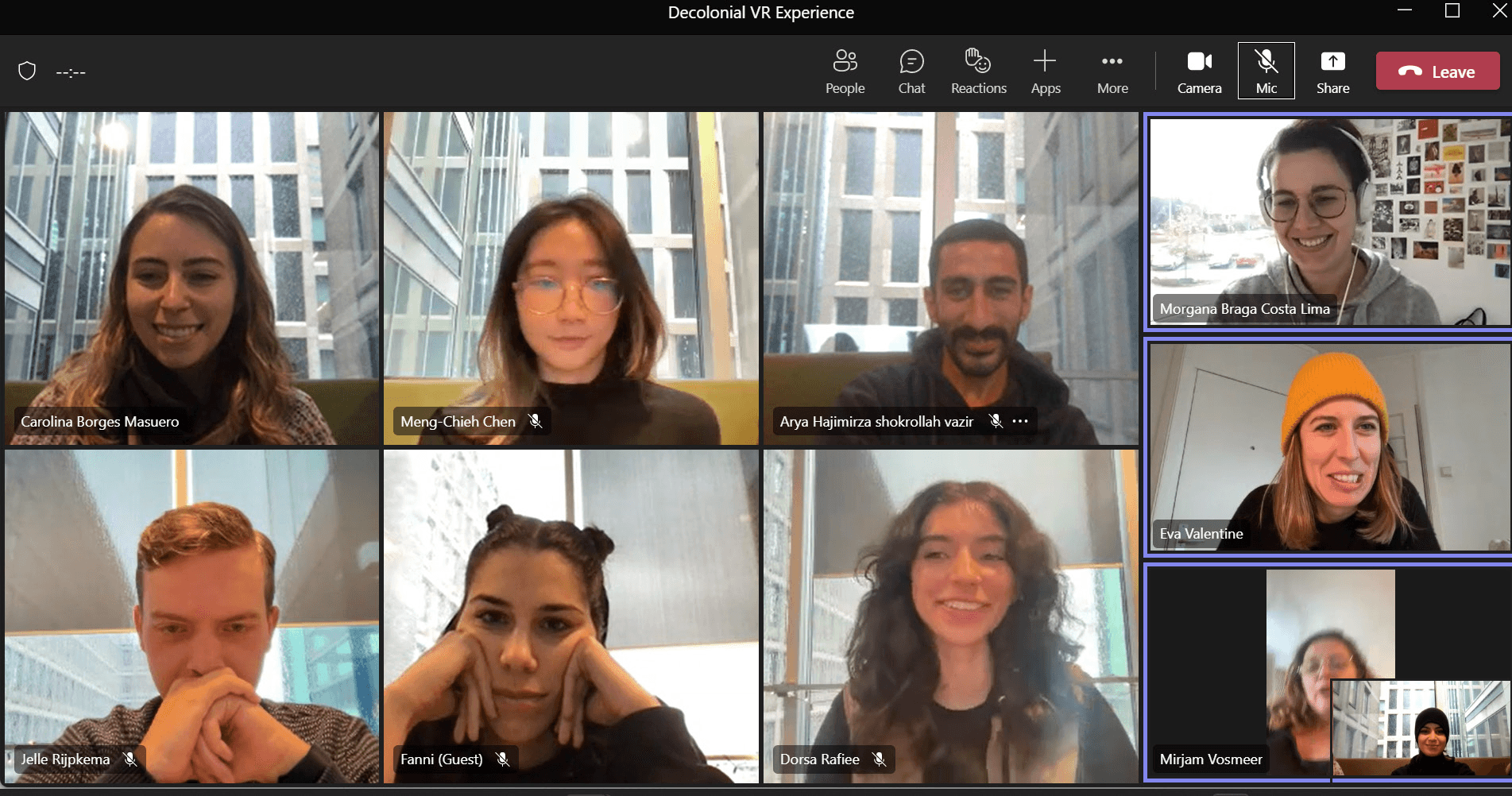
Goal
Focusing on 1 or more paintings in the room, and try to repair the story related to the colonial past with a different multi-vocal narrative.
Failure
Narrating a universal story with no complexity
Putting everything in one perspective
Success Metrics
Connect/navigate different stories (no preaching!)
Successfully select the stories to tell.
Try to impact people with an emotional trigger.
Be unbiased about the story, do not show anger or shame.
During our meeting with the coaching agency, Code dázur, we focused on gaining a deeper understanding of the problem. We discussed various existing examples and explored potential directions for our project. Here are the key takeaways from this meeting:
How can we make the experience relevant so that people can relate?
How something that happened that long ago could be relevant now?
Tell the story from generation to generation until today
Have an engaging narrative
Slavery is an abstract notion: How is it to be enslaved? How is it to enslave people?
Today’s colonial impacts: feeling of inferiority and structural, systematic racism
Example/ reference: Build an alternative guide for the museum; This started in the Guggenheim museum
What are the angles that there are to say? What angles do we want to say?
Literature Research
Throughout the project, we continuously conducted desk research, focusing on the history to uncover perspectives missing from museum narratives. We discovered three significant narratives that have been overlooked in historical accounts:
The story of enslaved individuals (including the resilient Quilombos), and their ongoing struggle for justice.
The history of Indigenous Brazilians, affected by slavery and disease, and the lasting impacts of colonialism on their descendants.
The financial gains of the Dutch during colonial times and the continued advantages they experience today.
FIELD STUDIES
Narrative Interviews (Project's Voices of Authority)
To understand key narratives from authoritative perspectives and identify relevant references, we planned interviews with descendants of the enslaved and Brazilians. Our initial discussions with two Nigerian colleagues aimed to uncover their views on decolonization and identify the most significant and credible references. Understanding the expectations of authoritative voices for such exhibitions was crucial for incorporating ethical considerations into our design.
Additionally, we gained valuable insights into Brazil's colonization history and its decolonization through multiple interviews with Morgana, our client and a Brazilian studying these narratives in museums. Here are some words we heard:
The long term effect of slavery is to take away your identity, take away your culture”.
“Even if you’re not in chains anymore, you’re still in mental chains”.
“By the end of the experience, people should be asking themselves: How do we not let those people suffer again? How can we be better people in the future?
”
“
MORE…
Stakeholder Mapping
This project involved multiple stakeholders, necessitating a clear identification of those we aimed to impact, satisfy, and impress. To achieve this, we initially identified the various stakeholders and then created a power-interest table. This tool helped us prioritize these stakeholders effectively throughout the project.
Manage Closely
Keep Satisfied
Monitor
Keep informed
Team members
Brazilians
Indigenous Brazilians
MDD
Rijks Museum
Partner agency
INDCOR
Morgana
Museum visitors: Tourists
Museum visitors:
Descendants of enslaved
Museum visitors:
Dutch
History & culture
Power
Interest
How might we display the Dutch colonization in Brazil through the different perspectives of people who were affected by it, by revealing the truth about all sides related to the history, in a impactful, relevant and engaging experience?
Ideation
After several brainstorming sessions and recognizing the need to highlight three overlooked narratives (the Indigenous peoples of Brazil, the enslaved, and the Dutch), we chose to create an audio narrative for each perspective.
We started by designing a narrative structure that begins with a historical overview and then explores the present-day societal impacts of these histories.
To refine the content for our audio experience, I proposed and held a detailed planning session. This helped us align our varied ideas on what to include for each perspective. During this session, we agreed on the number of perspectives to feature and the specific stories we wanted to tell for each.


Developing the project, we iteratively refined three main perspectives, culminating in three distinct versions, each evolving based on feedback and strategic decisions:
Version 1.0: Initially, each team member crafted one perspective to propose a foundational structure. This approach allowed us to bring diverse viewpoints and structures to the table.
Version 2.0: Leveraging the strengths of Version 1.0, we established a unified structure for all narratives, consisting of:
Introduction: Critically analyzing museum labels to introduce how the colonial period is currently represented.
Background: Delving into the historical context behind the narratives.
Present Relevance: Discussing their significance today, highlighted by quotes from real individuals.
Conclusion: Ending with a thought-provoking question to engage the audience.
Version 3.0: Influenced by a coaching agency's advice, we made the narratives more personal and engaging, moving away from a purely historical lesson format to foster a deeper connection with listeners.
We brought our narratives to life by recording audio using the voices of actual native individuals from each perspective, incorporating varied voices for quotes and transitions to maintain listener engagement.
Visual elements were crafted and animated in Adobe After Effects, paired with our recorded narratives to create a compelling video for the prototype, for which I utilized Artivive for initial AR testing.
In deciding on the AR's visual style, we initially considered mimicking traditional paintings but ultimately chose simple outlines against a historical book background. This design choice aimed to highlight the overlooked histories not found in conventional narratives.
User Testing
In our user testing phase, we evaluated the AR+Audio prototype with four participants of diverse nationalities, mirroring the diversity of museum visitors.
Observations revealed that users found it cumbersome to hold their phones throughout the experience, and feedback indicated that the AR component might not enhance our project's value.
Given that all prior tests highlighted the audio as the most captivating and impactful aspect of our experience, we decided to focus solely on the audio component moving forward.
We therefore, tested the audio experience as well, to compare and continue developing the experience.
Feedback from two rounds of user testing led us to an important insight:
focusing on audio alone creates a more engaging and impactful experience. Users found holding their phones for 10 minutes tiring, and visuals often distracted from the narration. Consistently, participants praised the audio narration for its engaging quality.

Finally! It's time to make, make, make…
Finalizing the Audio Files
For our final prototype, we refined the narratives to be more personal and re-recorded them with real voices.
Although we had a challenge: one colleague opted out due to the narrative's personal nature, but we successfully recorded with another individual.
We crafted the final audio using feedback from scripts and user testing. The audio featured a general narrator for transitions and a native speaker for personal stories, blending four separate tracks: background music from YouTube Studio, the narrator, the real person's voice, and sound effects like whipping sounds. This multi-track approach allowed us to fine-tune the volume of each element, enhancing the overall sound quality.
Stage Design
As we decided to go only with audio, we ideated on some physical interventions to do in the room.
The visuals we created for the AR, was used to print on plexy-glass and to hang in front of the paintings, to inform the visitors there is more to this paintings that you can see here.
For the off-boarding we decided the fourth wall to be a place for leaving comments, reflecting, and sharing. We also thought of the museum providing people with headsets, so we assigned a place for it.
App Prototype
For the final exhibition, we designed a prototype for the audio experience, for which we first designed a simple user flow and wireframes, to get feedback.

User Flow

Wireframes
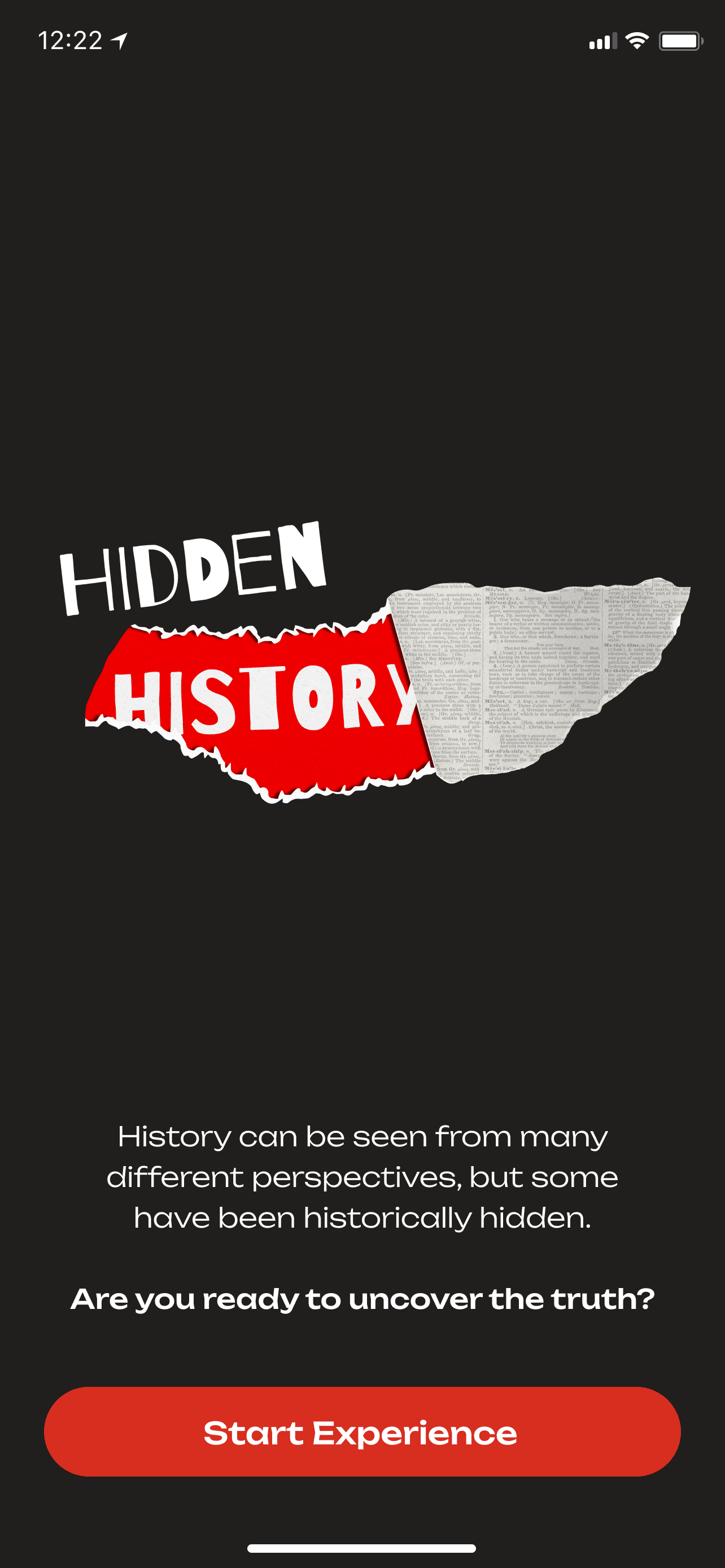



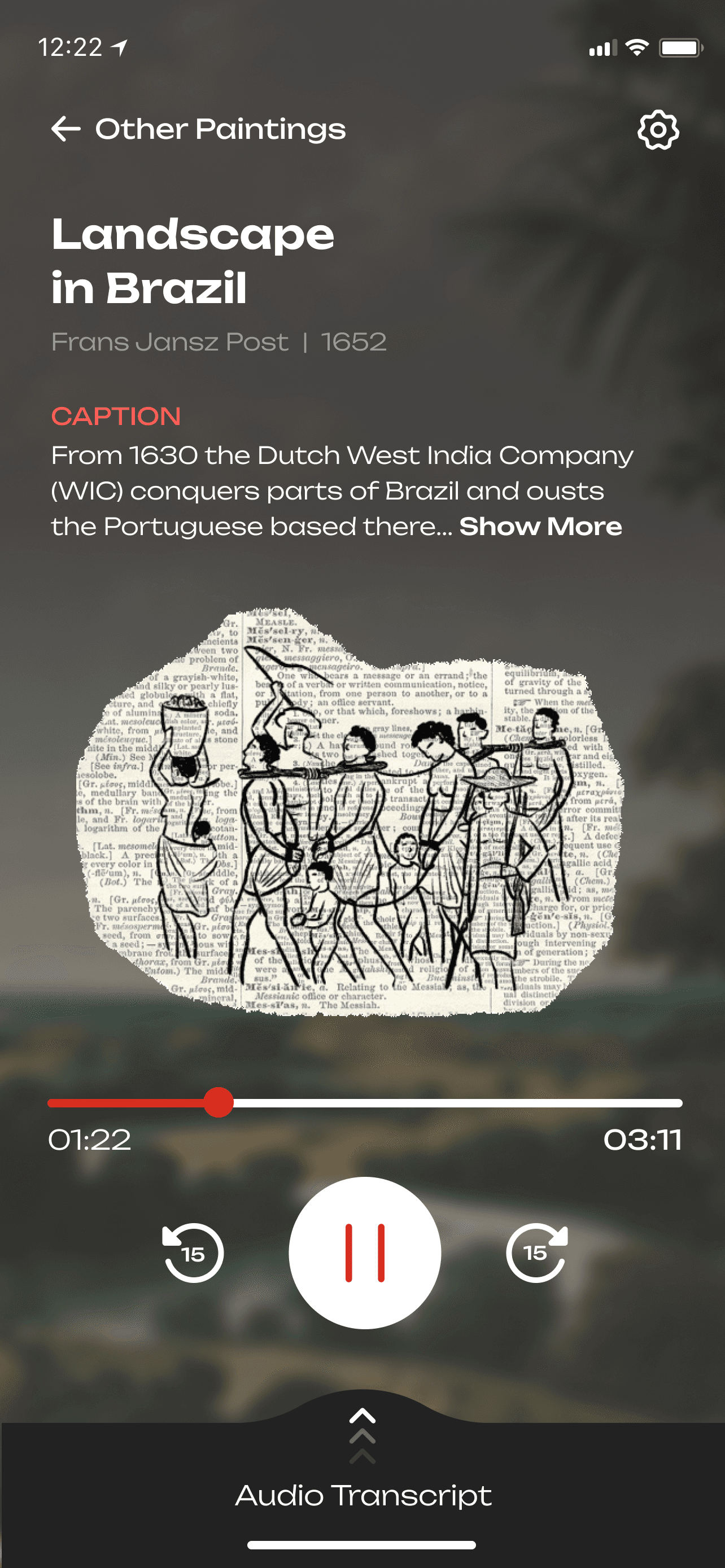



Join the Audio experience to explore Hidden History!
The feature starts with an unboarding story to familiarize and engage kids!
Choose a perspective of the story to listen to.
The feature starts with an unboarding story to familiarize and engage kids!
Immerse yourself in your selected story!
The feature starts with an unboarding story to familiarize and engage kids!
Get close captions in your preferred language!
The feature starts with an unboarding story to familiarize and engage kids!
But the Final look…
App Usability Testing
For the usability testing, we asked the participants in the final exhibition to perform these tasks:
Scan the QR Code and listen to the audio experience
Access the audio transcript
Listen to audio from other paintings
The main observations from the usability testing were:
For the audio transcripts, people were clicking instead of swiping, so we should make sure it's clear that you can swipe up.
Instead of going back to Home page we should add navigation for users to see other paintings, because people were not sure how to see other paintings.
Experience Branding
Reflections for the Future
What Next?
To refine the audio tour further based on user feedback and continue to raise awareness about the complexity of colonial history. (Also, maybe tailor a more visually engaging AR experience.)
Activities
Re-recording narratives for the final audio prototype to enhance personal connection and impact.
Considering physical interventions in the museum space to complement the audio experience.
Expanding branding and marketing materials for the "Hidden History" audio tour.
More Works …
It's not Simple
Immersive, multi-perspective exhibition design on unconscious biases (coming soon…)
Back to Top

